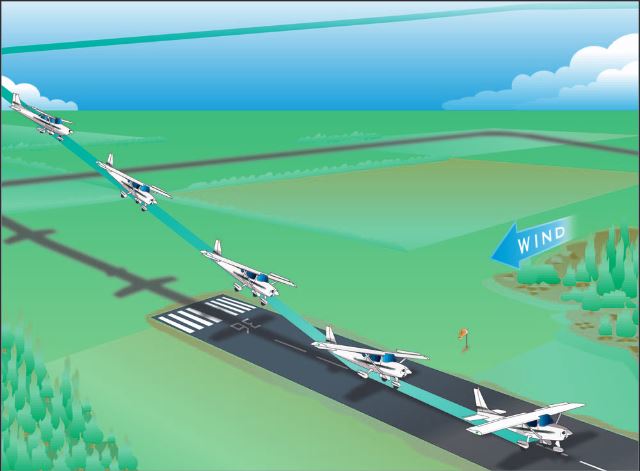Get My Drift?
11/14/2013
Posted in
Flight Training
Tags: crosswind, side slip, crabbing, adverse yaw

When landing, not only is it hard enough to flare at the right altitude to land on the main wheels (tricycle gear) or all 3 wheels (tailwheel aircraft), but we also have to cancel out that pesky drift as well. Yes, some aircraft have built in cross wind landing gears such as the B-52 bomber and the Cessna 195, but the aircraft you fly most likely does not have this luxury. So, you must stop the drift that results from crosswinds when you land!
Get My Drift?
Written by Marc Nathanson, Ret. Lt. Col USAF, FAA Designated Pilot Examiner
When landing, not only is it hard enough to flare at the right altitude to land on the main wheels (tricycle gear) or all 3 wheels (tailwheel aircraft), but we also have to cancel out that pesky drift as well. Yes, some aircraft have built in cross wind landing gears such as the B-52 bomber and the Cessna 195, but the aircraft you fly most likely does not have this luxury. So, you must stop the drift that results from crosswinds when you land!
Why? Remember the analogy your instructor may have used. The one he/she used to describe crabbing to correct for the
effects of the current when crossing a river in a boat. The boat will drift downstream when pointed at a landmark directly across the river. Turn or crab into the current and the drift downstream is taken care of and the boat ends up at its destination on the opposite shore.
Landing an aircraft in a crosswind has some similarities, but with an added dimension. Although we can cancel out drift downwind by turning into the wind, we still must land with no drift and the wheels aligned with the landing direction axis of the runway. Landing in a crab (sideways to some degree) can result in a ground loop or even roll the tires off their hubs. In all cases, controllability is compromised.
We know that the rudder aligns the longitudinal axis of the aircraft with the runway centerline, but it does not stop the drift unless you do something. The "something" you must do is to use the ailerons to lower the upwind wing enough to stop the drift. How much depends on how much crosswind exists. Because winds change and are unpredictable, you can expect to move the flight controls to make adjustments all the way to touchdown. Also remember that as airspeed decreases, the effectiveness of your control surfaces decrease. This will result in more control input being needed.
You can practice crossing the controls safely by ensuring you maintain a safe airspeed. While at a safe altitude, pick a straight line on the ground such as a road that has a crosswind. Consider your takeoff runway and find a road that is close to 90 degrees to it, which should present a crosswind. Before you solo, you should have been taught how to crab into the wind. In this exercise practice keeping the aircraft's flight path and longitudinal axis aligned with the road by applying enough rudder to align the longitudinal axis with the road while banking into the wind to stop the drift. Note that when you bank into the wind with the rudder already applied, you may have to input a bit more rudder to maintain longitudinal alignment. This extra bit of rudder is due to the effects of adverse yaw caused by the application of aileron with the down aileron creating more induced drag, thus causing yaw into it.
Most new pilots are afraid that they stand the chance of entering a spin if the ailerons and rudder are crossed. In my spin/upset training course I teach how to control airspeed while crossing the controls to avoid spinning the aircraft. Simply put, learn the correct minimum airspeed and conditions you can slip your aircraft, while keeping in mind that under normal conditions, you can hold crosswind controls up to the demonstrated crosswind velocity in your POH.
Stopping the drift and keeping the aircraft's longitudinal axis aligned with the runway centerline takes practice and control inputs must be made in a timely manner due to the dynamic nature of crosswind landings.
Practice makes perfect, get my drift?